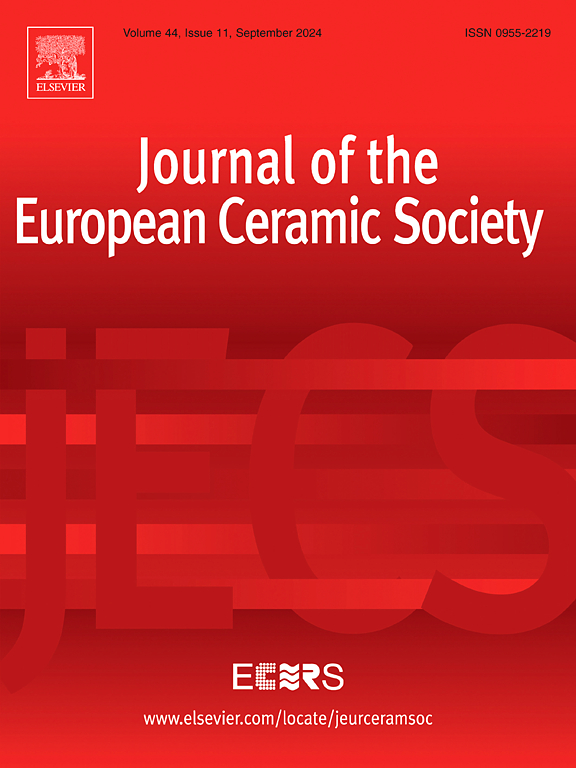Fabrication of intricate lunar regolith monoliths via freeze casting
IF 5.8
2区 材料科学
Q1 MATERIALS SCIENCE, CERAMICS
Journal of The European Ceramic Society
Pub Date : 2025-02-26
DOI:10.1016/j.jeurceramsoc.2025.117328
引用次数: 0
Abstract
Sustainable materials processing with in-situ resource utilization is a key priority in lunar exploration to minimize dependence on Earth-supplied materials. Freeze casting is used for the first time to manufacture lunar regolith monoliths with complex shapes and controlled porosity. Stable aqueous slurries of a highlands simulant with varying solid loading were prepared using a low-volume polymeric additive and then cast into various intricately shaped molds. The freeze-dried regolith specimens were sintered between 1100 °C and 1180 °C and achieved relative densities of 35–85 % with compressive strengths of 6 MPa to 36 MPa. This technique has great potential to utilize the lunar cold and vacuum environment for the freezing and sublimation steps, which may reduce the energy consumption required for shape fabrication. Ceramics fabricated this way are candidates for insulating components, interlocking structures, and instrument parts, which are essential for sustained lunar operations.
求助全文
约1分钟内获得全文
求助全文
来源期刊

Journal of The European Ceramic Society
工程技术-材料科学:硅酸盐
CiteScore
10.70
自引率
12.30%
发文量
863
审稿时长
35 days
期刊介绍:
The Journal of the European Ceramic Society publishes the results of original research and reviews relating to ceramic materials. Papers of either an experimental or theoretical character will be welcomed on a fully international basis. The emphasis is on novel generic science concerning the relationships between processing, microstructure and properties of polycrystalline ceramics consolidated at high temperature. Papers may relate to any of the conventional categories of ceramic: structural, functional, traditional or composite. The central objective is to sustain a high standard of research quality by means of appropriate reviewing procedures.
 求助内容:
求助内容: 应助结果提醒方式:
应助结果提醒方式:


